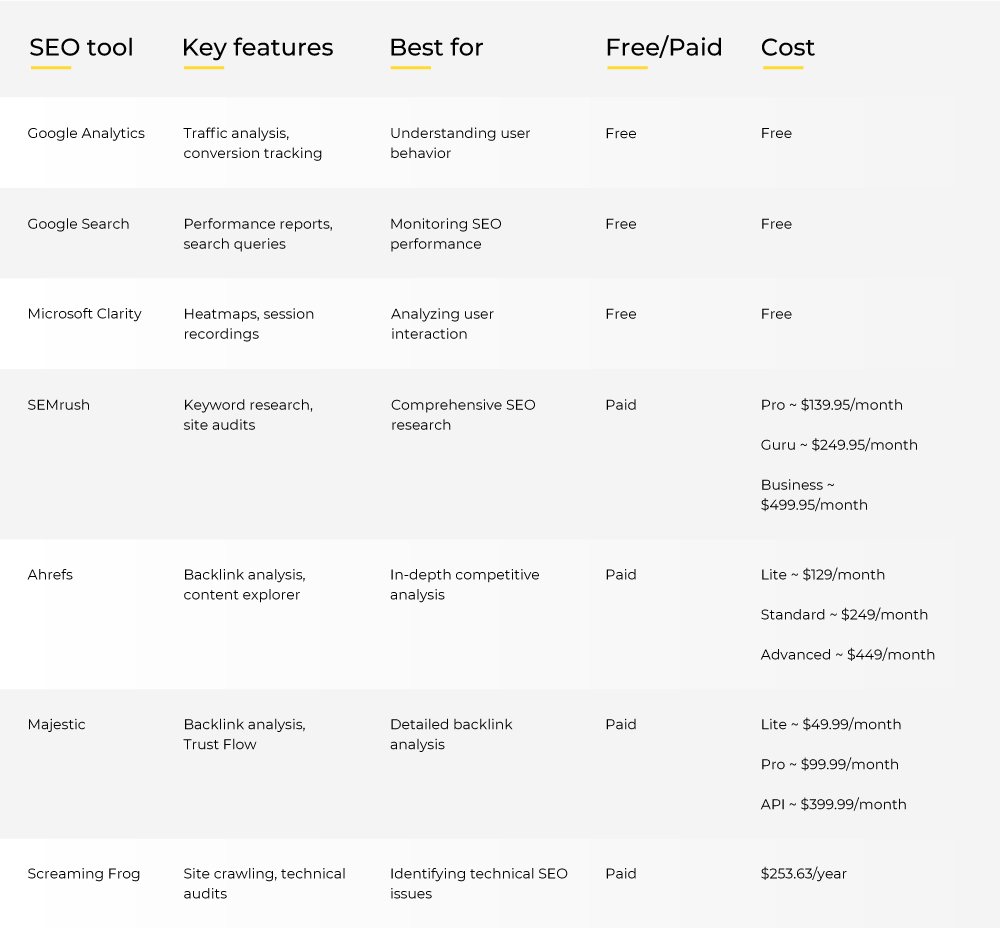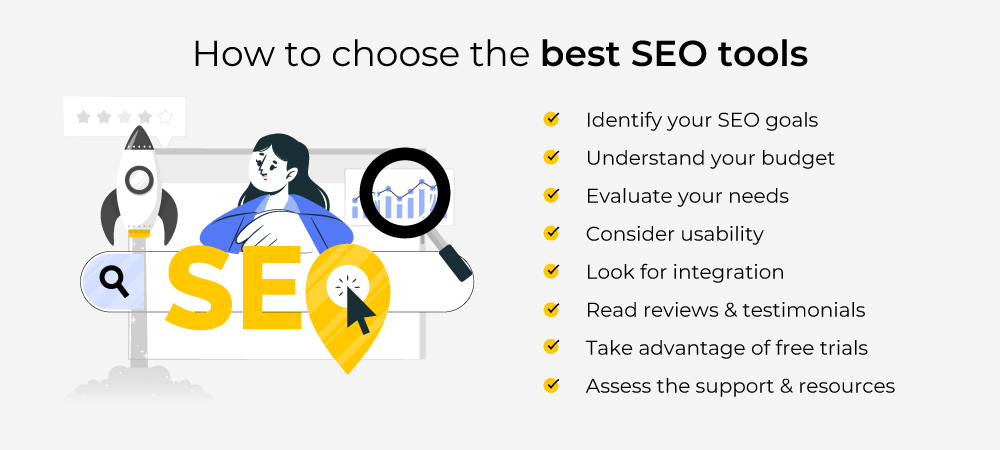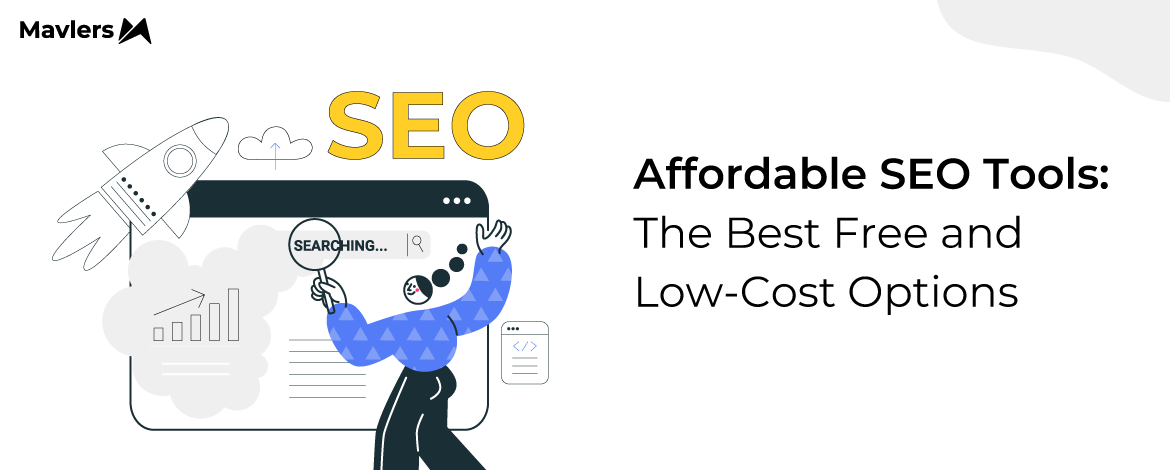So you are an SEO expert hired by a business/startup to get those SERP rankings crawling higher than ever before.
But there is a catch.
Yep! You know the familiar script! “We are bootstrapped and have an ice-thin budget to spare, John, but we hope and pray that you can figure out a way to fix our organic rankings.”
Hmmm, sounds all too familiar?!
Cease to fret, amigos! We at Mavlers round up our own SEO experts in the house and had them come up with a list of free, paid (albeit low-cost, well comparatively!) SEO tools that can help you do the job without billing the company an arm and a leg (yes, you just saved yourself that pink slip, buddy!) 😉
In today’s blog, you can expect to familiarize yourself with;
- A comparative list of free and paid SEO tools
- How do you choose the best SEO tools for your business?
By the end of this blog, you will have gained a deeper understanding of the best SEO tools for small businesses and how to make the right decision for your brand/business.
A comparative list of free and paid SEO tools
Let’s take a bird’s eye view of the top affordable and free SEO tools before delving into their detailed features.

Free SEO tools
1. Google Analytics (GA)
Google Analytics is a powerful, free tool that provides detailed insights into website traffic and user behavior.
Key features:
- Traffic analysis: Understand where your visitors are coming from, their behavior on your site, and how they engage with your content.
- User demographics: Get detailed demographic information about your visitors, including age, gender, and interests.
- Conversion tracking: Set up goals and track conversions to measure the effectiveness of your marketing campaigns.
Use case: This is ideal for understanding how users interact with your site and identifying areas for improvement. For example, you can track which pages have the highest bounce rates and make necessary changes to improve user engagement.
Example: If you notice a high bounce rate on a particular blog post, you can use GA to analyze the user flow and identify potential issues. Perhaps the content isn’t meeting user expectations, or the page load time is too long.
2. Google Search Console (GSC)
Google Search Console helps monitor, maintain, and troubleshoot your site’s presence in Google Search results.
Key features:
- Performance reports: See how your site performs in search results, including clicks, impressions, and average position.
- Indexing status: Check which pages are indexed by Google and identify issues that may prevent your pages from being indexed.
- Search queries analysis: Understand which search queries bring users to your site and how you rank for those queries.
Use case: GSC is essential for tracking your site’s SEO performance and diagnosing search-related issues. For instance, if certain pages aren’t getting indexed, GSC can help you identify and fix the problem.
Example: If you discover that your site has many pages with crawling errors, you can use the Coverage report in GSC to identify and resolve these issues, ensuring that all your important pages are indexed.
3. Microsoft Clarity
Microsoft Clarity is a free user behavior analytics tool that provides insights into how users interact with your website.
Key features:
- Heatmaps: Visualize where users click, scroll, and move their mouse on your site.
- Session recordings: Watch recordings of user sessions to understand their behavior and identify usability issues.
- User interaction analytics: Analyze metrics such as time on page, scroll depth, and engagement.
Use case: This is useful for understanding user behavior and improving site usability and conversion rates. For example, you can identify areas where users drop off and make necessary adjustments to improve the user experience.
Example: By analyzing heatmaps, you might discover that users aren’t clicking on a key call-to-action button because it’s placed too low on the page. Moving the button to a more prominent position can increase conversions.
Paid SEO tools
1. SEMrush
SEMrush is an all-in-one SEO tool suite for keyword research, competitive analysis, and site audits.
Key features:
- Keyword research: Find profitable keywords and analyze their difficulty, search volume, and competitive landscape.
- Site audits: Conduct comprehensive site audits to identify technical SEO issues and get recommendations for improvement.
- Backlink analysis: Analyze your backlink profile and discover new link-building opportunities.
Use case: Excellent for comprehensive SEO research and competitor analysis. SEMrush provides a wide range of tools to help you optimize your website, content, and overall SEO strategy.
Example: If you’re launching a new product, you can use SEMrush to perform keyword research and identify the best SEO keywords to target in your content. Additionally, you can analyze your competitors’ backlink profiles to find potential link-building opportunities.
Cost:
- Pro ~ $139.95/month
- Guru ~ $249.95/month
- Business ~ $499.95/month
2. Ahrefs
Ahrefs is a robust SEO toolset for backlinks and SEO analysis.
Key features:
- Site Explorer: Analyze your competitors’ websites and discover their top-performing content, backlinks, and keywords.
- Keywords Explorer: Conduct in-depth keyword research and find keywords that are relevant to your niche.
- Content Explorer: Find popular content in your industry and identify opportunities for content creation.
Use case: Ahrefs is best for in-depth backlink analysis and competitive research. It provides detailed insights into your competitors’ strategies, helping you stay ahead of the game.
Example: You can use Ahrefs to find high-authority websites that link to your competitors but not to you. Reach out to these sites with compelling content or collaboration proposals to earn valuable backlinks.
Cost:
- Lite ~ $129/month
- Standard ~ $249/month
- Advanced ~ $449/month
3. Majestic
Majestic specializes in backlink analysis and is known for its extensive link index.
Key features:
- Backlink analysis: Analyze your backlink profile and discover new link-building opportunities.
- Site Explorer: Get a detailed view of your site’s backlink profile, including metrics like Trust Flow and Citation Flow.
- Trust Flow and Citation Flow Metrics: Measure the quality and quantity of backlinks pointing to your site.
Use case: Ideal for detailed backlink analysis and link-building strategies. Majestic’s metrics help you assess the quality of your backlinks and identify opportunities for improvement.
Example: Use Majestic to analyze the Trust Flow and Citation Flow of your backlink profile. If you find that your Trust Flow is low, focus on acquiring high-quality backlinks from authoritative sites to improve your overall link profile.
Cost:
- Lite ~ $49.99/month
- Pro ~ $99.99/month
- API ~ $399.99/month
4. Screaming Frog
Screaming Frog is a website crawler used for SEO audits.
Key features:
- Site crawling: Crawl your website to identify technical SEO issues, such as broken links, duplicate content, and missing meta tags.
- Technical SEO audits: Get detailed reports on your site’s technical health and recommendations for improvement.
- Broken link analysis: Identify and fix broken links to improve user experience and search engine rankings.
Use case: Screaming Frog is one of the best SEO audit tools for identifying technical issues and improving site structure. It helps you ensure that your site is optimized for both users and search engines.
Example: After crawling your site with Screaming Frog, you might discover several pages with missing meta descriptions. Adding relevant meta descriptions can improve your site’s click-through rates and search engine visibility.
Cost: Free version with limited features, full version at $253.63/year.
How do you choose the best SEO tools for your business?

Choosing the best SEO tools for your business involves evaluating several factors to ensure you select tools that meet your specific needs and budget. Here’s a step-by-step guide to help you choose the best SEO tools:
1. Identify your SEO goals
Before selecting any tools, define what you want to achieve with your SEO efforts. Your goals might include:
- Increasing organic traffic
- Improving search engine rankings
- Conducting keyword research
- Performing site audits
- Analyzing competitors
- Tracking conversions
2. Understand your budget
Determine how much you are willing to spend on SEO tools. Your budget will influence whether you can afford premium tools or if you need to focus on free or low-cost options.
3. Evaluate your needs
Different SEO tools offer various features, so it’s essential to identify what specific tasks you need help with. Common SEO tasks include:
- Keyword research: Tools like SEMrush, Ahrefs, and Google Keyword Planner.
- Site audits: Screaming Frog, SEMrush, and Ahrefs.
- Backlink analysis: Ahrefs, Majestic, and SEMrush.
- Content optimization: Yoast SEO (for WordPress), Clearscope, and Surfer SEO.
- Competitor analysis: SEMrush, Ahrefs, and SpyFu.
- Analytics and reporting: Google Analytics, Google Search Console, and SEMrush.
4. Consider usability
Choose user-friendly tools that match your technical proficiency. Some tools have steep learning curves, while others are more intuitive and easy to use.
5. Look for integration
Ensure that the SEO tools you choose can integrate with other tools and platforms you use, such as your website’s CMS (like WordPress), Google Analytics, or marketing automation tools.
6. Read reviews and testimonials
Look for reviews and testimonials from other users. Websites like G2, Capterra, and Trustpilot can provide valuable insights into the pros and cons of different SEO tools.
7. Take advantage of free trials
Many paid SEO tools offer free trials or demo versions. Take advantage of these trials to test the tools and see if they meet your needs before committing to a subscription.
8. Assess the support and resources
Check if the tool offers good customer support, tutorials, and other resources to help you get the most out of the tool.
The road ahead
Now that you are familiar with the affordable and free SEO tools available, you might want to know how long you need to do SEO to see the expected results.



Naina Sandhir - Content Writer
A content writer at Mavlers, Naina pens quirky, inimitable, and damn relatable content after an in-depth and critical dissection of the topic in question. When not hiking across the Himalayas, she can be found buried in a book with spectacles dangling off her nose!
From Click to Conversion: Understanding and Setting Up Enhanced Conversions in Google Ads
Revolutionize Your SEO Strategy: Top AI Tools for Efficient Link Building